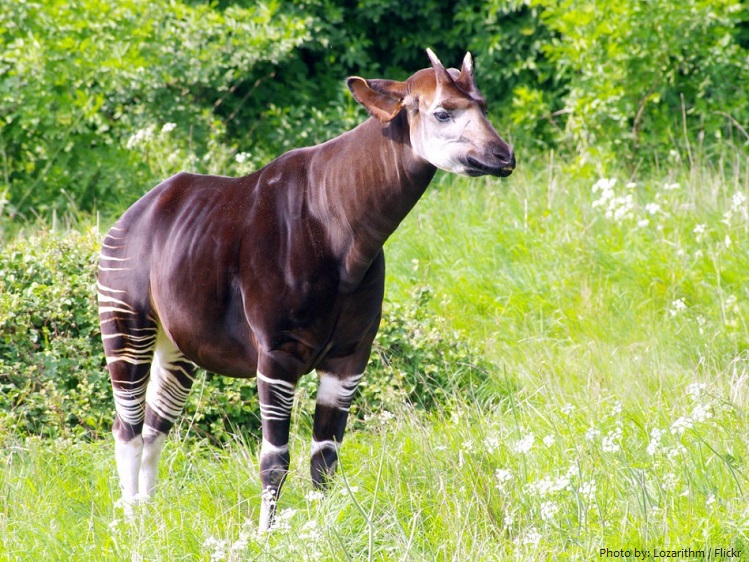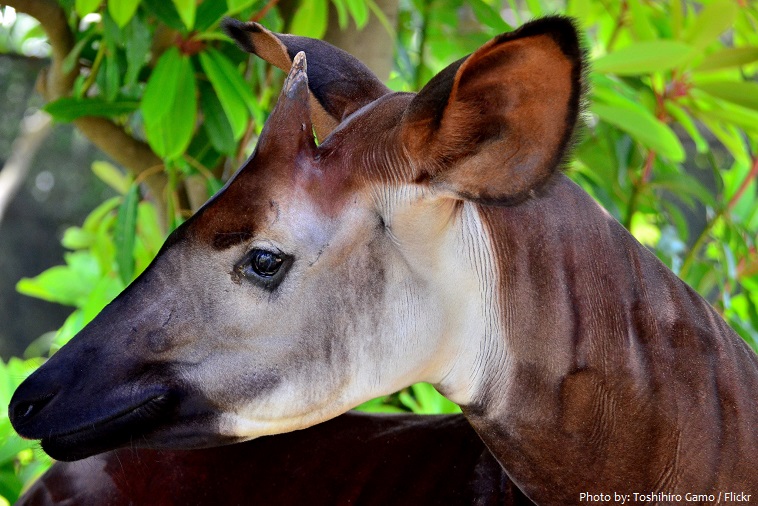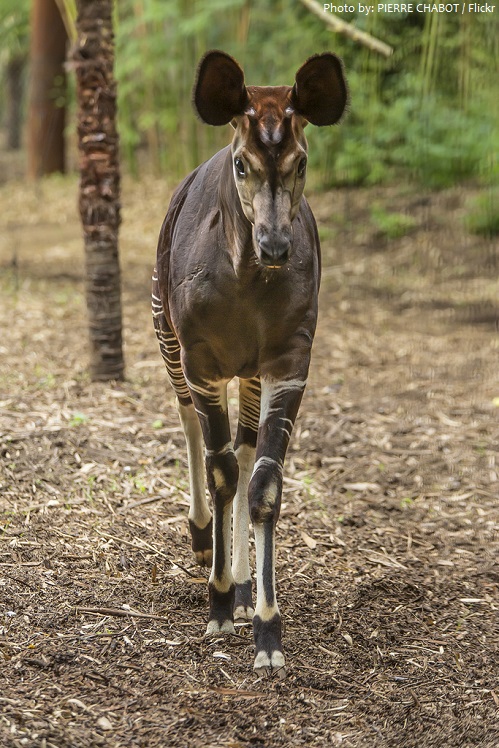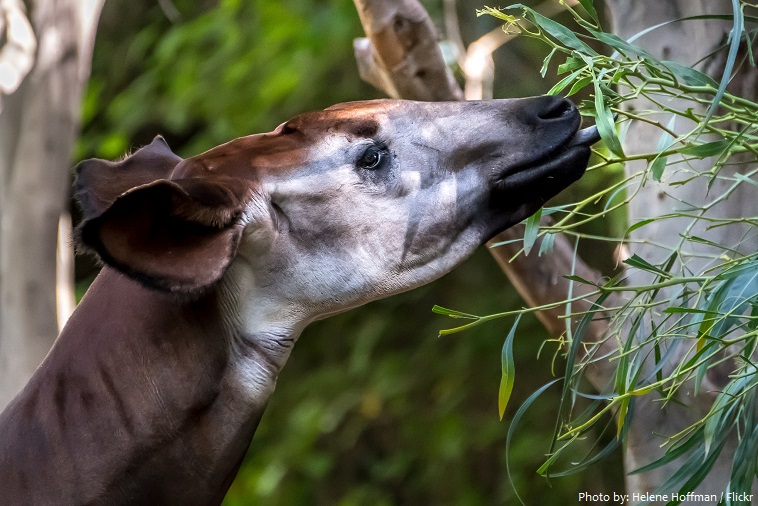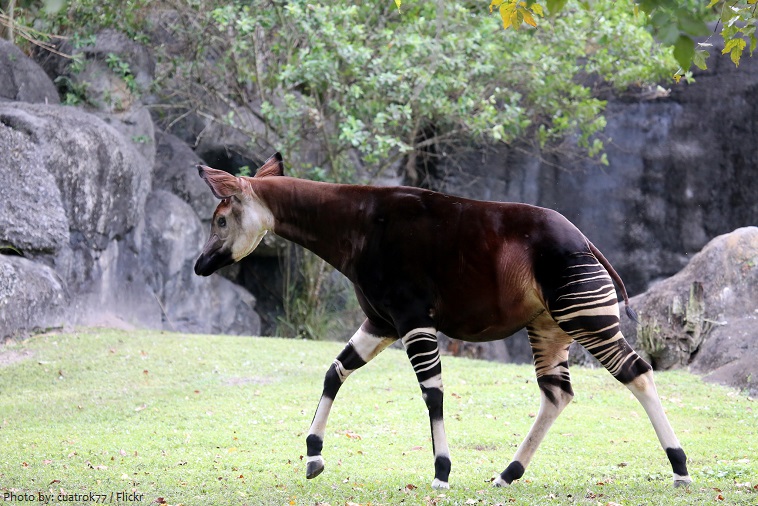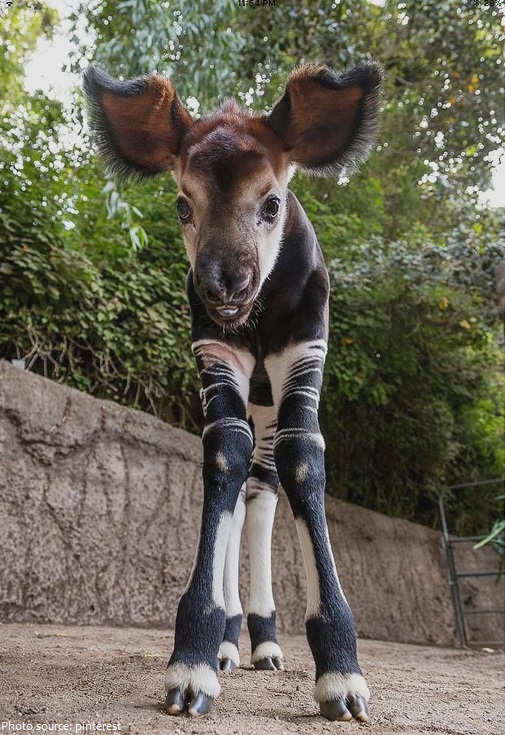The okapi also known as the forest giraffe, congolese giraffe or zebra giraffe, is an beautiful and unusual animal native to the northeast of the Democratic Republic of the Congo in Central Africa.
Although the okapi bears striped markings reminiscent of zebras, it is most closely related to the giraffe.
The okapi’s home is in the tropical rain forest in the northeast region of the Democratic Republic of the Congo (formerly Zaire).
They prefer altitudes between 500 and 1,000 m (1640 and 3280 ft), although they may venture above 1,000 m (3280 ft) in the eastern montane rainforests.
The range of the okapi is limited by high montane forests to the east, swamp forests below 500 m (1640 ft) to the west, savannas of the Sahel/Soudan to the north, and open woodlands to the south.
The okapi’s typical lifespan is 20 to 30 years.
The okapi stands about 1.5 meters (4.9 ft) tall at the shoulder and has an average body length around 2.5 m (8.2 ft). Its weight ranges from 200 to 350 kg (440 to 770 lb).
It has a long neck, and large and flexible ears. The ears of an okapi can rotate independently, so the animal can listen for sounds both in front and behind.
The coat is a chocolate to reddish brown, much in contrast with the white horizontal stripes and rings on the legs and white ankles. The striking stripes make it resemble a zebra. These features serve as an effective camouflage amidst dense vegetation. The face, throat, and chest are greyish white. Interdigital glands are present on all four feet, and are slightly larger on the front feet.
Male okapis have short, hair-covered horns called ossicones, less than 15 cm (5.9 in) in length. Females 4.2 cm (1.7 in) taller on average, slightly redder, and lacking prominent ossicones, instead possessing hair whorls.
Okapis are primarily diurnal, but may be active for a few hours in darkness.
Okapis are herbivores, feeding on tree leaves and buds, grasses, ferns, fruits, and fungi. They are unique in the Ituri Forest as they are the only known mammal that feeds solely on understory vegetation, where they use their 45 centimeters (18 inch) tongues to selectively browse for suitable plants.
Okapi is a cud-chewing animal. Cud is a portion of food that returns from a ruminant’s stomach to the mouth to be chewed for the second time. More accurately, it is a bolus of semi-degraded food regurgitated from the reticulorumen of a ruminant. Cud is produced during the physical digestive process of rumination.
The okapi’s dark tongue is long enough to reach its eyes and ears.
Like the giraffe, the okapi must splay its legs to reach the ground when drinking.
An okapi can run at speeds up to 56 km/h (35 mph).
They are solitary animals, living alone except during mating season or when an adult female has a calf. They are very wary and secretive.
When angry, okapis kick and throw their head back. Dominant animals hold their necks straight and heads higher than subordinates, and the placing of the neck and head on the ground is a sign of submission.
Okapi mate all year long, with mating especially common in May and June and again in November and December. The gestation period is about 15 months, and there normally is only one calf. Newborns can stand within 30 minutes and will start to nurse within an hour. For the first two months, okapi calves spend most of their time hidden away in vegetation, with the mother visiting only to feed her offspring. By 2 months of age, the calf will have tripled in size and be ready to accompany its mother while she feeds.
The IUCN Red List of Threatened Species considers the okapi an endangered species.
Major threats include habitat loss due to logging and human settlement. Extensive hunting for bushmeat and skin and illegal mining have also led to a decline in populations.
It is believed that there are currently about 25,000 okapis in the wild.
A 2016 study found that the common ancestor of giraffe and okapi lived about 11.5 million years ago.
For years, Europeans in Africa had heard of an animal that they came to call the African unicorn.
